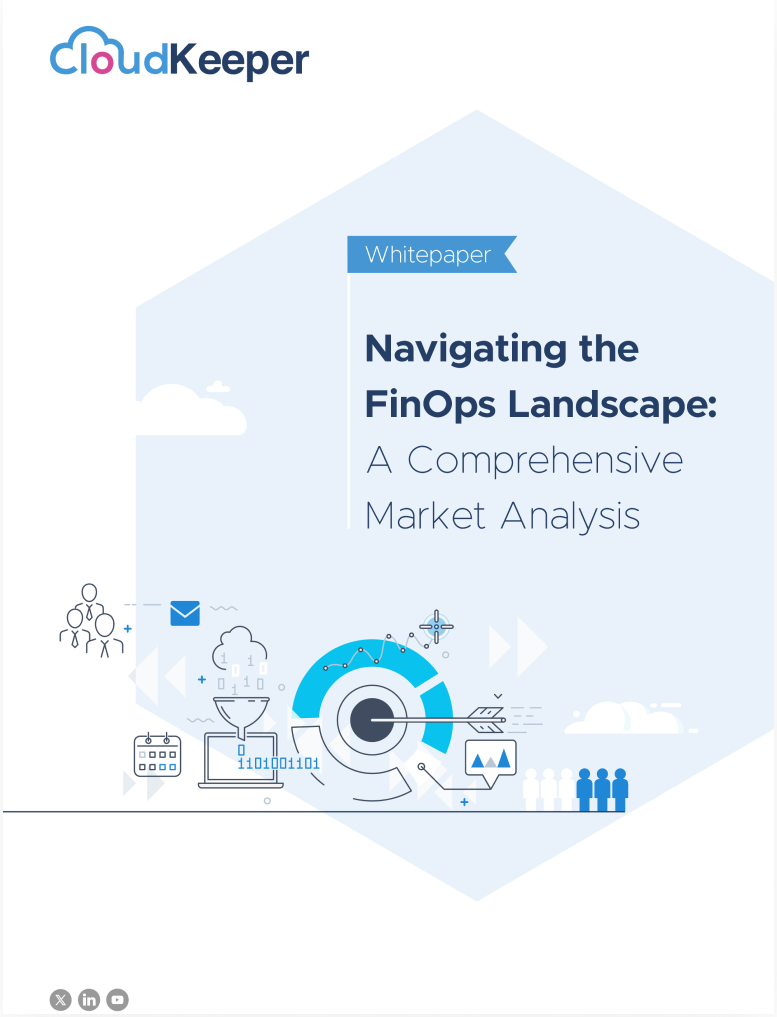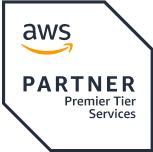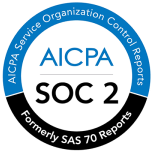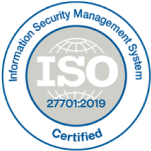For the first time in the brief history of cloud computing, the tech industry is facing a slowdown and the economy as a whole has turned quite stormy. With the recession looming and financial analysts struggling to predict a longer-term forecast, being more cost-efficient has become the sentiment for businesses across the world.
With cloud computing taking up a substantial share of tech budgets, now would be a good time for organizations to reconsider and optimize their cloud spending. But this doesn’t need to happen at the cost of ramping down your cloud initiatives, pulling out of projects, or creating an unpleasant experience for your customers.
In this blog, we will explore five practical challenges with cloud cost optimization that most organizations face and which can cause budget overruns. We will also explain cloud cost management and cloud cost optimization best practices, that would help keep them at bay.
1. Cloud Waste
Cloud waste, in simple terms, means the cloud resources that remain unused or underused. Cloud waste majorly occurs when organizations overestimate the resources required to fulfill a specific business goal.
According to a recent survey conducted by the Everest Group, 38% of organizations worldwide experience more than 30% wastage in their cloud spend. Especially in large corporations with a multi-cloud infrastructure, it is easy for cloud costs to go unnoticed.
Cloud waste can also happen because of the following reasons.
- Availing of services for longer periods than needed
- Duplicate purchases for a similar type of cloud service
- Using instances with a higher number of cores than needed for the task
- Resource volumes remaining attached to already terminated instances
- Failing to de-provision orphaned resources like load balancers and database volumes
Solution
The single most important aspect is to gain cloud cost visibility into the infrastructure and resource utilization. With a proper cloud cost analysis system in place, organizations can gain real-time insights into their entire cloud inventory. It will help them get notified of cost deviations and make real-time decisions on how to reduce cloud costs and cloud waste. Cloud providers themselves offer cloud cost management platforms like the AWS Cost Explorer, which is one of the widely used AWS cost monitoring tools. However, it is always recommended to go for more insightful and feature-rich tools.
Another way to prevent cloud waste is to implement a cloud cost allocation and tagging strategy. Tagging and mapping cloud resources directly to various teams and projects creates a sense of responsibility for the stakeholders. This will also make them accountable to improve their provisioning strategy, rightsize the resources, and turn instances off when they are not being used.
Enhanced cloud cost visibility, along with the right tagging strategy, can help reduce your cloud waste.
2. Lack of Performance Tracking and Benchmarking
Performance tracking and the subsequent benchmarking process help understand how well a cloud infrastructure is performing against industry standards. This helps in optimizing cloud costs, maintaining business continuity, and ensuring all relevant parties gain access to the cloud services.
Without such a framework, organizations might find it difficult to identify and measure the usage of cloud resources and the actual requirements. This can lead to provisioning-utilization mismatches, unnecessary costs, and missed cloud cost management and cloud cost optimization opportunities.
This can also result in a range of disadvantages such as -
- Difficulty in identifying the root cause of performance bottlenecks
- Increased downtime and bad user experience
- Increased risk of security breaches
- Lack of Confidence in Cloud Investments
- Cloud budget cuts and organizational restrictions
Solution
Cloud experts recommend tracking and measuring the performance of an organization’s cloud infrastructure using metrics such as CPU Utilization, Memory Usage, Network Throughput, Storage I/O, etc. It is important to make sure that these metrics address the three important areas of cloud performance - Compute, Storage, and Network.
Here, the measures of success or failure are represented in terms of Key Performance Indicators (KPIs) or Objectives with Key Results (OKRs). If a KPI of Cost per Instance Hour is used to measure the costs incurred by AWS EC2 Instances, organizations can track the costs incurred in running individual EC2 instances, identify cost-saving opportunities, find instances that are not fully utilized, and much more.
This helps organizations optimize their cloud infrastructure, find opportunities for improvements, and implement better resource utilization. There are tools by cloud providers, like AWS Service Health, which is an AWS optimization service that can help track these metrics. Third-party FinOps and cloud cost optimization solutions can also help in performance benchmarking.
3. Lack of Organizational Alignment
A proper cloud cost optimization practice requires the entire organization to work closely together, especially the Finance and Engineering teams. But when these teams work in silos, they become disconnected and thereby create a communication and budgeting gap.
Imagine a finance team making cloud purchasing decisions, unaware of the speed, security, and architectural considerations of the engineering team. This creates unintentional cost variances, difficulty in cloud cost analysis, degraded user experiences, and more.
Making the finance, procurement, and engineering teams work in synergy is one of the biggest obstacles in cloud FinOps, as per the FinOps Foundation. A multi-cloud setup, complex hierarchies, and lack of technical awareness will make this challenge even more difficult to tackle.
Solution
Having all the FinOps stakeholders on common ground is one of the major steps in solving the cloud cost optimization challenges. The finance, procurement, and engineering teams must speak the same language and should be involved in all the cloud cost management decisions. This will require a cultural shift in the organization and empowering team members with the necessary skills.
By doing this, organizations can make sure that their teams are more proactive, collaborative with FinOps decisions, and motivated to build more cost-effective products. Transparent interdisciplinary communication can also help in better cloud computing cost-benefit analysis, informed decision-making, and superior cost savings.
4. Lack of Accurate Forecasting
The dynamic nature and pay-per-use models of cloud computing help users ensure availability when needed, but this could also result in cloud costs that fluctuate dramatically. Continuous and accurate cloud cost forecasting is the right way to anticipate these cost variations, better plan budgets and be proactive toward cloud cost management.
Unfortunately, there is no one-size-fits-all FinOps solution for all types of cloud-cost situations. This activity requires specific tooling and data analysis capabilities to be available around the clock. Without the proper setup for accurate cloud cost analysis and forecasting, organizations can end up over-provisioning, over-buying, and paying for unused resources.
Solution
Once the previous challenges have been addressed with a proper cloud cost management platform for visibility, as well as better coordination between Finance and Engineering teams, the organization needs to analyze the existing cloud usage and application performance. This historical data could be used to create a trial cloud budget. Using this trial cloud budget as a baseline, further adjustments could be made to arrive at a proper cloud cost forecast and a strategy on how to reduce cloud costs.
However, there are a few key aspects to be taken care of
- Frequency of forecasts - The teams must arrive at a consensus on when forecasts are done and how frequently the forecast data is needed.
- Forecast models - Based on the specific needs of the organization, various forecasting models could be used, like trend-based forecasting or driver-based forecasting.
- Forecast accuracy - As the tracking - tagging - and forecasting exercises turn more mature, organizations can close in on the precision gaps and gradually improve the forecast accuracy.
- Implementing Automation - By moving away from manual processes, organizations can improve visibility and cost governance by ensuring smarter recommendations, tagging hygiene, rightsizing, and reservation management.
5. Absence of a Dedicated FinOps Team
Most of the time, engineers and finance professionals will only be able to manage cloud cost optimization as a small part of a larger set of core business responsibilities. With no dedicated FinOps team, organizations won’t be able to hold anyone formally accountable to come up with solutions for cloud budget overruns and resource usage optimizations.
This makes determining the hows, whys, and whats of FinOps and implementing guidelines and best practices quite overwhelming. All of these will push the concerned stakeholders and the executive management into a crisis mode which would eventually lead to a paralyzed initiative.
Insufficient time and resources allocated to cloud cost optimization initiatives can also result in poor visibility into cloud costs, inability to trace back or charge back cloud costs to the cost units, cloud waste, poor user experience, missed opportunities, and more.
Solution
Building a FinOps team can start with nominating candidates from the Engineering, Finance, and Procurement teams, who have enough understanding of cloud technology and the related challenges. If the cloud consumption is large enough, it's better to consider hiring additional professionals for a full-time FinOps position.
The FinOps team could then focus on optimizing various facets of cloud cost optimization like
- Cloud Cost Analysis and Reporting
- Cloud Resource Performance
- Provisioning and Rightsizing
- Pricing Efficiency and Discounts
- Budgeting and Forecasting
The FinOps practitioners could gain additional skills and knowledge from resources like the FinOps Foundation, talking to experts, and getting involved in events. Also, the FinOps team must not act as a governing or enforcing authority to other business functions. They should be a facilitator to guide them toward cost-effective cloud usage.
Working with a FinOps Partner
Through this blog, we have only explored some of the major cloud cost optimization challenges that organizations come across in their day-to-day cloud operations and how to tackle them by optimizing the cloud setup and organizational culture. However, cloud costs could spiral out of control for multiple reasons.
Even though a dedicated Cloud FinOps team can tackle most of these problems, finding enough professionals with the right set of skills and expertise could be hard. Making up for this with training and knowledge sharing clearly would require a lot of time and effort.
In addition, when companies, especially startups, are under pressure to release new products, optimize customer experiences, and increase revenue, it is easy for cloud cost optimization to take a back seat, leading to excessive cloud costs.
An expert FinOps partner can free the organization from all these efforts and resource wastages and let you focus on your core business functions. With years of specialized experience in the domain, these cloud cost optimization companies will make sure that your cloud cost always remains a top priority. They will also optimize your cloud infrastructure for better performance and user experience.
Summary
It would be a smarter decision for organizations to work with a dedicated FinOps partner who could help them achieve all their cloud cost optimization goals easily and more efficiently, compared to building and maintaining an in-house FinOps team. They could also help in
- Ensuring there are no provisioning issues and cloud wastages
- Providing in-depth cloud visibility and implementing tagging practices
- Orienting the entire organization toward cloud FinOps awareness
- Measuring cloud performance and comparing them with industry benchmarks and KPIs
- Leveraging advanced technologies and tools for accurate budgeting and forecasting
… and everything else that would make cloud cost optimization easier.
With a strong team of certified AWS experts and Cloud FinOps enthusiasts, CloudKeeper has helped 300+ businesses across the globe achieve superior and sustainable cloud savings, without affecting their performance benchmarks. We would love to show you how we could help you too! Book a free demo today.









